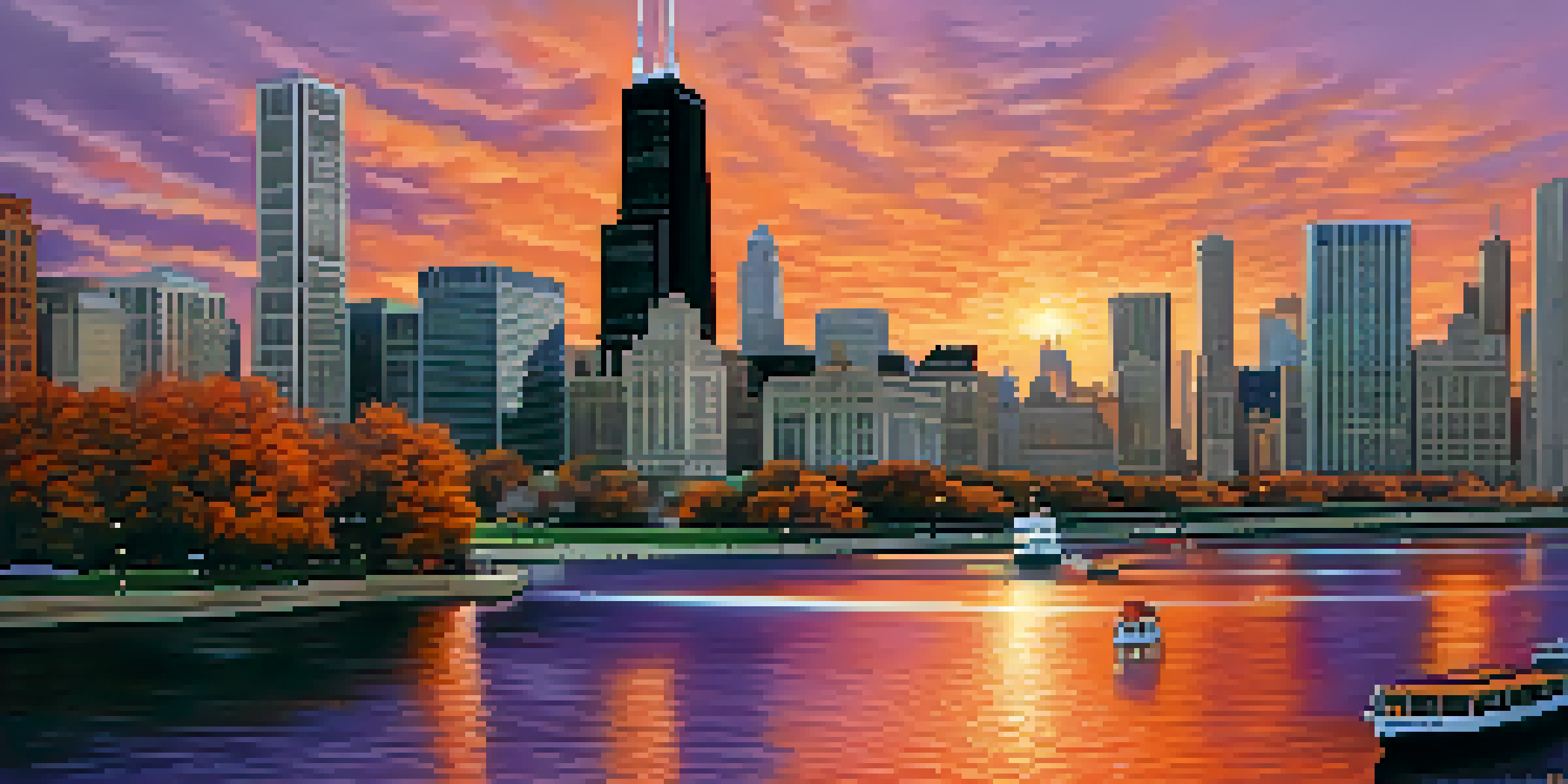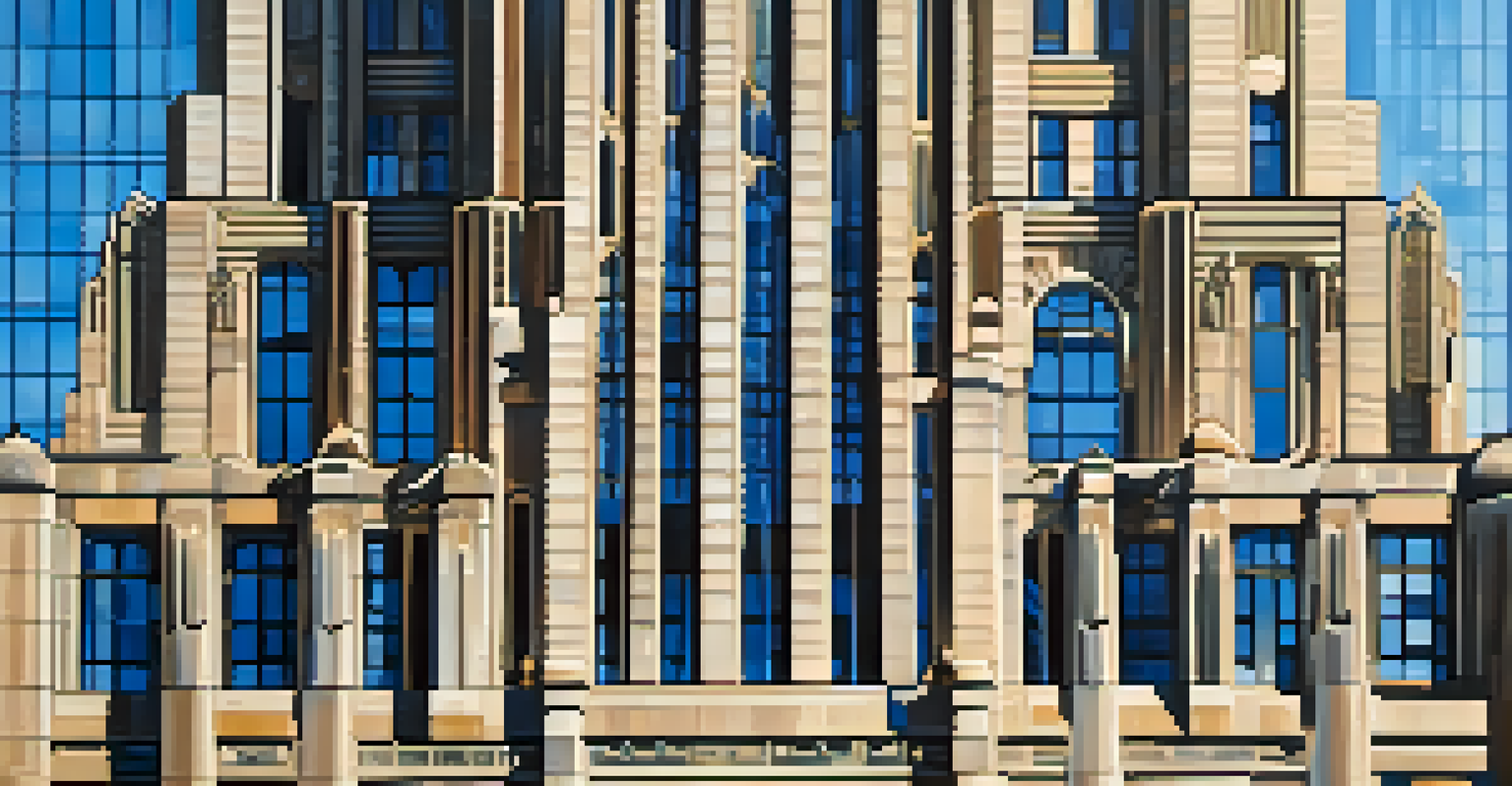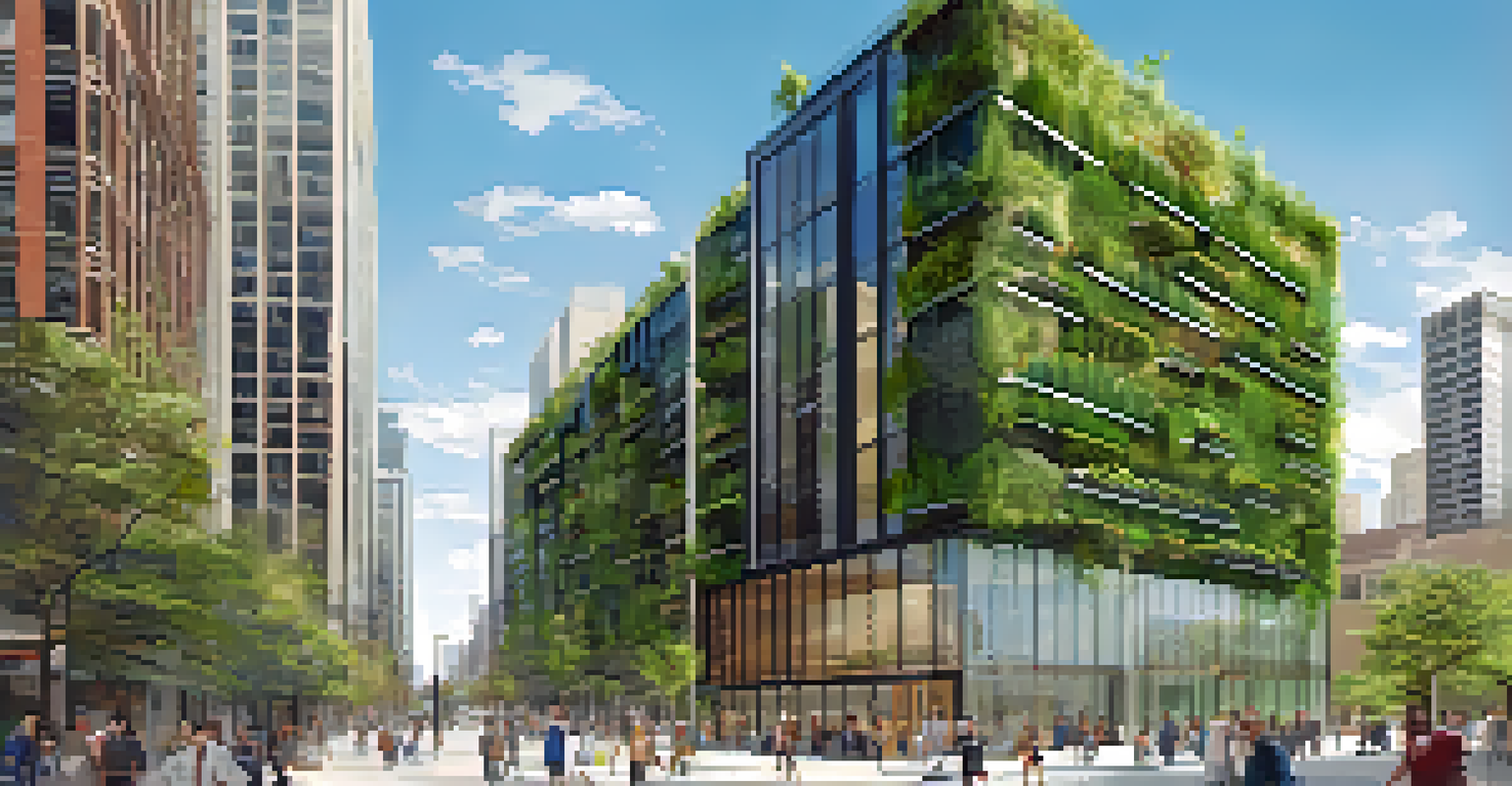Exploring the Art of Facades in Chicago's Architectural Gems

Introduction to Chicago's Architectural Facades
Chicago's skyline is a tapestry of stories woven through its stunning facades. Each building tells its own tale, showcasing not just architectural styles, but also the history and culture of the city. From the iconic Willis Tower to the elegant Chicago Cultural Center, the facades serve as a visual feast that captures the essence of urban life.
Architecture is the art of how to waste space.
Exploring these facades provides insights into the city’s evolution, reflecting changes in architecture, technology, and society. They are not just walls but canvases that embody artistic expression, creativity, and the spirit of innovation. As we delve deeper into Chicago's architectural gems, we'll discover how these facades contribute to the city's identity.
In this journey, we'll highlight the significance of design elements, materials used, and the stories behind some of the most famous buildings. So, let's take a closer look at what makes Chicago's facades stand out in the architectural world.
The Influence of the Chicago School
The Chicago School, emerging in the late 19th century, revolutionized architectural design with its innovative facades. Characterized by steel-frame construction and large plate-glass windows, this movement allowed buildings to reach new heights while maximizing natural light. The facades of this era are marked by simplicity and functionality, which set the groundwork for modern skyscrapers.

One of the most notable examples is the Monadnock Building, which showcases the boldness of this design philosophy. Its massive brick facade emphasizes the strength and permanence of the structure, making it a classic representative of the Chicago School. These buildings inspire awe and admiration, proving that less can indeed be more.
Chicago's Facades Reflect History
The architectural facades of Chicago tell the story of the city's evolution, showcasing its rich history and cultural identity.
As we explore further, it’s essential to appreciate how these foundational designs influenced subsequent architectural movements. The Chicago School didn't just shape local skylines; its principles resonated globally, marking Chicago as a pioneer in architectural innovation.
Art Deco Elegance in the City
As we move into the 1920s and 30s, the Art Deco movement brought a wave of elegance and glamour to Chicago's facades. Characterized by bold geometric shapes and rich ornamentation, this style added a new dimension to the city's architectural landscape. The Chicago Board of Trade Building is a prime example, showcasing a stunning blend of functionality and artistry.
Good buildings come from good people, and all problems are solved by good design.
Art Deco facades often incorporate intricate details, like stylized motifs and colorful tiles, creating visually captivating structures. These buildings not only function as commercial spaces but also as artistic statements, inviting passersby to appreciate their beauty. They reflect the optimism and energy of the Jazz Age, resonating with the vibrancy of the city.
Exploring these facades allows us to understand how architecture can influence cultural identity. The Art Deco period in Chicago stands as a testament to creativity and innovation, leaving a lasting impression on the city’s skyline.
Modernist Simplicity: Mies van der Rohe
The modernist movement brought a shift towards minimalism, with architects like Mies van der Rohe redefining the concept of facades. His philosophy of 'less is more' is exemplified in buildings like the Crown Hall at the Illinois Institute of Technology, where glass and steel reign supreme. The clean lines and open spaces create a sense of harmony and clarity, inviting interaction and engagement.
Mies' facades often emphasize transparency, blurring the lines between indoor and outdoor spaces. This creates a dialogue between the building and its surroundings, enhancing the overall experience for those who inhabit or visit the space. The simplicity of these designs encourages a focus on form and function, stripping away unnecessary embellishments.
Art Deco Adds Glamour to Skyline
The Art Deco movement infused Chicago's architecture with elegance and artistic expression, highlighting the vibrancy of the Jazz Age.
Through the lens of modernism, we see how facades can embody a philosophy that influences not just architecture but also the way we live. Mies' contributions remind us that beauty can be found in simplicity, making Chicago a canvas for modern architectural thought.
Sustainable Designs: A Green Approach
In recent years, sustainability has become a guiding principle in architectural design, leading to innovative facades that prioritize the environment. Chicago has embraced this trend, with buildings incorporating green roofs, energy-efficient materials, and natural ventilation systems. These designs not only reduce the environmental impact but also enhance the aesthetic appeal of the skyline.
The Solaire, for example, is a stunning example of eco-friendly architecture with its green facade, which plays a crucial role in energy conservation. By integrating plants and solar panels, this building showcases how modern architecture can harmonize with nature. Such designs offer a glimpse into a future where buildings can coexist with their environment, promoting sustainability.
As we explore the shift towards green facades, it’s clear that the architectural landscape is evolving. This trend reflects a growing awareness of environmental issues and the importance of creating spaces that contribute positively to our planet.
The Role of Facades in Urban Identity
Facades play a crucial role in shaping the urban identity of Chicago, acting as visual markers that define neighborhoods. Each building contributes to the unique character of its surroundings, creating a sense of place and belonging. The juxtaposition of modern skyscrapers with historical structures tells a story of resilience and adaptation, reflecting the city’s rich tapestry.
The iconic Wrigley Building, with its white terra cotta facade, stands as a symbol of Chicago’s architectural history. Its location along the Chicago River enhances its significance, serving as a beacon for both locals and visitors. Such landmarks create a collective memory, reminding us of the city’s past while inspiring future generations.
Sustainability Shapes Modern Design
Recent trends in sustainable architecture are transforming Chicago's facades, prioritizing environmental harmony and energy efficiency.
Understanding the role of facades in urban identity helps us appreciate the intricate relationship between architecture and community. They are not just aesthetic elements; they embody the spirit of a neighborhood, making each street a vibrant narrative waiting to be explored.
Conclusion: Celebrating Chicago's Facades
As we wrap up our exploration of Chicago's architectural facades, it's clear that they are much more than mere structures. They are narratives that tell the story of a city's evolution, showcasing art, culture, and innovation. Each facade is a reflection of the era it represents, adding depth to the urban experience.
From the historical significance of the Chicago School to the modern sustainability movements, these facades have shaped the way we perceive and interact with the city. They invite us to pause, look up, and appreciate the artistry that surrounds us, reminding us of the beauty in our everyday environment.

In celebrating Chicago’s facades, we embrace the stories they tell and the artistry they represent. Let us continue to explore, appreciate, and preserve these architectural gems for future generations to enjoy and learn from.